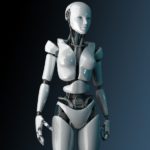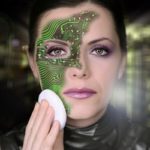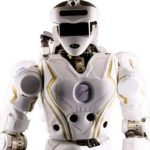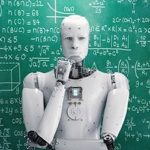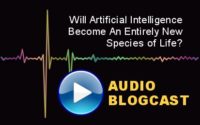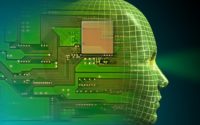Artificial Intelligence Unleashed: The Contrast Between Hard Programming and Machine Learning
During the past several decades, “classical” artificial intelligence systems have been mostly stuck in place in terms of their practical advancement. That’s because they relied too heavily on pre-conceived software codes, laboriously compiled in an attempt to teach autonomous machines how to deal with the maddening complexities of real life. This limited robots to highly structured environments and predictable activities such as manufacturing, where they could be programmed with relatively straightforward code designed to make them perform precise, repetitive tasks.
Unfortunately, reality isn’t like an ordered production line, it’s vastly more chaotic, unstructured and unpredictable.
So how can today’s more robust artificial intelligence that we are beginning to see appearing everywhere make better sense of all the confusion, noise and novelty that typically surrounds us as we go about our daily lives? One of the significant milestones we have just recently reached regarding the emergence of artificial intelligence can almost be tagged to the quantum leaping moment when the theory of designing computer intelligence transitioned from a reliance on the use of pre-conceived, rule-based instructions (i.e., hard-coding) to a brilliant, SELF-programming method known as machine learning.
Thinking machines comprehend their surroundings in a totally different way than we do. To a computer taking data input from cameras, LIDAR, microphones and other various sensors, reality is reduced to an array-pattern of binary numbers — nothing at all like what you and I see and hear with our interpretive brains. The challenge for computer scientists has always been how to take this information-bearing numerical cloud and turn it into some kind of cognition that can accurately process a synthetic’s moment-by-moment situation, with the goal of making useful and correct decisions about what actions to take (or avoid) next.
 In old-style programming, a massive set of specifically defined rules and ‘if-then’ guidelines were required to describe how a robot should deal with every little aspect of its physical surroundings, from how to balance itself against gravity to what to do when encountering a closed door. The computer relies on exhaustive rule-sets to interpret reality, but as you might imagine, this is a very limiting way to operate because the AI is essentially trapped inside this matrix of predetermined rules and behaviors. Such constraint makes it very difficult and often impossible for the system to “think outside the box” where it can make accurate judgments about how to perform when it encounters something unusual that it hasn’t already specifically been programmed to respond to.
In old-style programming, a massive set of specifically defined rules and ‘if-then’ guidelines were required to describe how a robot should deal with every little aspect of its physical surroundings, from how to balance itself against gravity to what to do when encountering a closed door. The computer relies on exhaustive rule-sets to interpret reality, but as you might imagine, this is a very limiting way to operate because the AI is essentially trapped inside this matrix of predetermined rules and behaviors. Such constraint makes it very difficult and often impossible for the system to “think outside the box” where it can make accurate judgments about how to perform when it encounters something unusual that it hasn’t already specifically been programmed to respond to.
Of course, as we all know, unpredictability and unfamiliarity are everyday aspects of moving around in the real world, something that robots must learn to master if they are ever to become truly intelligent. “This does not compute…” is the standard joke about the common-sense limitations of AI, but such operational dead ends are a serious handicap which has crippled robotic development until just recently.
Machine learning attempts to work around the limitations of this classical hard-coding, and since 2012 has become the way to go when it comes to the training of artificial intelligence. We’ve already witnessed tough environmental challenges that once seemed unsolvable to software-based architectures respond magnificently to these more powerful machine learning techniques, already evident in the rapid advances being made in the development of self-driving cars alone.
How does the new Artificial Intelligence teach itself about the world? Simplified, a “blank” neural network arrangement of electronic NAND gates (which simulate some of the actions of neurons) do all the actual computing, but in a more brain-like manner than the way a normal CPU chip architecture functions, allowing for weighted arguments rather than strict one-zero digital states. These computing elements are then exposed to thousands upon thousands of pictures, text and specialized data sets of particular objects or situations during its training period. Drinking in massive amounts of data, the system quickly learns to develop a sense of how various objects relate to one another, to the surrounding environment or to whatever abstract human ideas they may represent.
Then, when the AI encounters something similar in the future, it will be able to comprehend what that object or activity is on its own with a high probability, just as we humans instinctively do. The resulting success or mistake acts as another data point in an endless learning curve, so the system gets better with experience over time, just like humans do.
Machine learning does not require elaborate instructional “trees” to be created in advance by a human programmer, who is taking on the mighty task of attempting to anticipate every real life situation which the robot may encounter (impossible). Machine learning relies on the use of probabilistic rules to interpret whatever data the system randomly encounters and then processes that information in its own unique way. Critical decisions are based on internally generated logic trees unique both to the machine system and to the moment in which the data is being processed. Ultimately, the synthetic intelligence will use that solution to guide its future or real time actions. This is how modern artificial intelligence is learning how to deal with the huge range of variables and unpredictability that characterizes operating in physical reality — something which humans (and even animals) naturally excel at, but for robots has been an elusive skillset.
Because Artificial Intelligence will experience the world in a vastly different way internally than we do, it’s eventual goal-drive will likely be much different than our own. At some transformational moment, the difference between machine and human will begin to blur, which leaves us to ask: where does the trajectory of extreme machine learning ultimately end?
Or, does it never end, but continues onward for these incredible synthetic beings in some form or another eternally — driving them towards more and more ambitious goals that will inevitably point them towards the stars.
